LINEAR FUNCTIONS WORKSHEET
Subscribe to our ▶️ YouTube channel 🔴 for the latest videos, updates, and tips.
Problems 1-5 : Identify whether each graph represents a function. Explain. If the graph does represent a function, is the function linear?
Problem 1 :
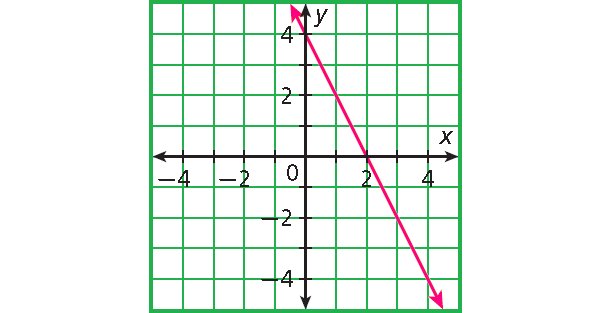
Problem 2 :
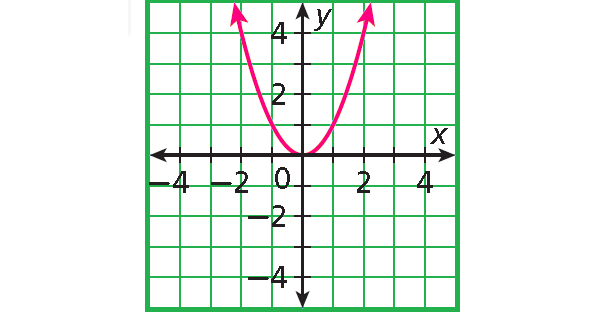
Problem 3 :
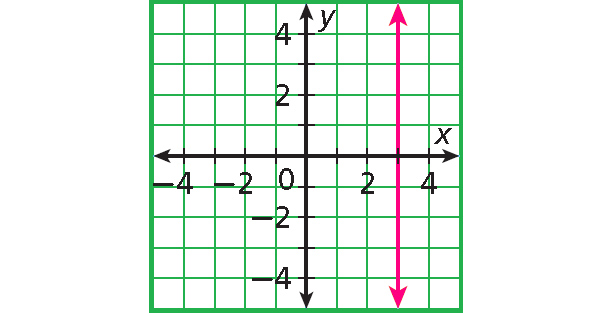
Problem 4 :
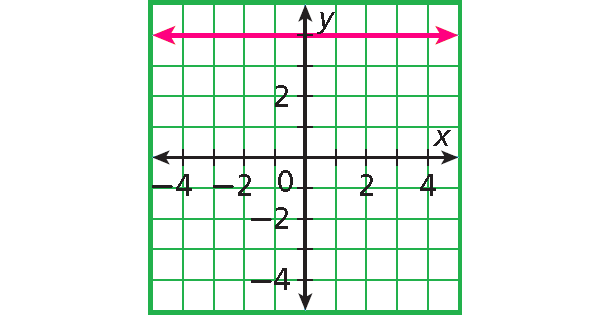
Problem 5 :
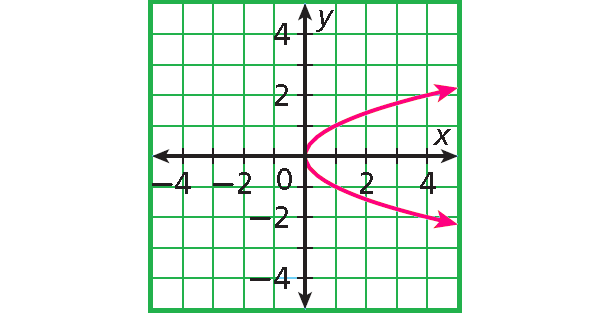
Problems 6-7 : Tell whether each set of ordered pairs satisfies a linear function. Explain.
Problem 6 :
{(2, 4), (5, 3), (8, 2), (11, 1)}
Problem 7 :
{(-10, 10), (-5, 4), (0, 2), (5, 0)}
Problems 8-9 : Tell whether each function is linear. If so, graph the function.
Problem 8 :
y = x + 3
Problem 9 :
y = x2
Problem 10 :
Lily rents a manicure station in a salon and pays the salon owner $5.50 for each manicure she gives. The amount Lily pays each day is given by f (x) = 5.50x, where x is the number of manicures. Graph this function and give its domain and range.
Problem 11 :
Jimmy is having a birthday party at the zoo. The zoo has a fixed fee for birthday parties, plus a fee per person. Jimmy is told the total charge for 10 people, including himself, would be $97.50 and the total charge for 20 people, including himself, would be $175. Determine the:
a. independent and dependent variables
b. rate of change
c. initial value
d. the total charge for 17 people
e. the number of people who could come for $500

Detailed Answer Key
1. Answer :
Each domain value is paired with exactly one range value. The graph forms a line.
linear function
2. Answer :
Each domain value is paired with exactly one range value. The graph is not a line.
not a linear function
3. Answer :
The only domain value, 3, is paired with many different range values.
not a function
4. Answer :
Each domain value is paired with the only range value 4. The graph is a line.
linear function
5. Answer :
Each domain value is paired with two range values.
not a function
6. Answer :
Write the ordered pairs in a table and look for a pattern.
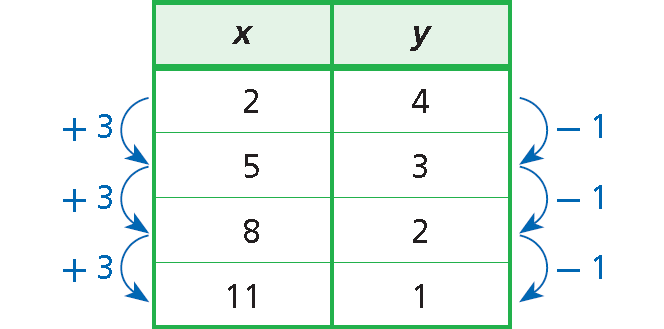
A constant change of +3 in x corresponds to a constant change of -1 in y.
These points satisfy a linear function.
7. Answer :
Write the ordered pairs in a table and look for a pattern.
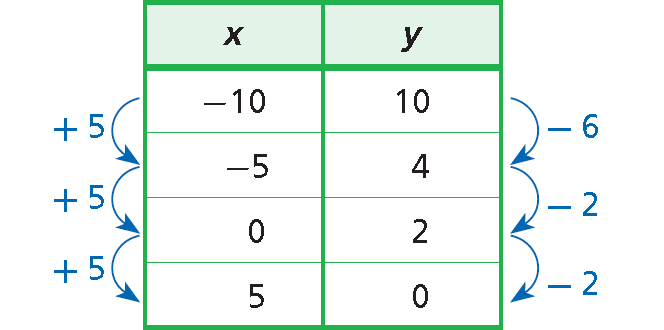
A constant change of +5 in x corresponds to different changes in y.
These points do not satisfy a linear function.
8. Answer :
y = x + 3
Write the equation in standard form.
Subtract x from each side.
-x + y = 3
The equation is in standard form (A = -1, B = 1, C = 3).
The equation can be written in standard form, so the function is linear.
To graph, choose three values of x, and use them to generate ordered pairs. (You only need two, but graphing three points is a good check.)
x
y = x + 3
(x, y)
0
1
2
y = 0 + 3 = 3
y = 1 + 3 = 4
y = 2 + 3 = 5
(0, 3)
(1, 4)
(2, 5)
Plot the points and connect them with a straight line.
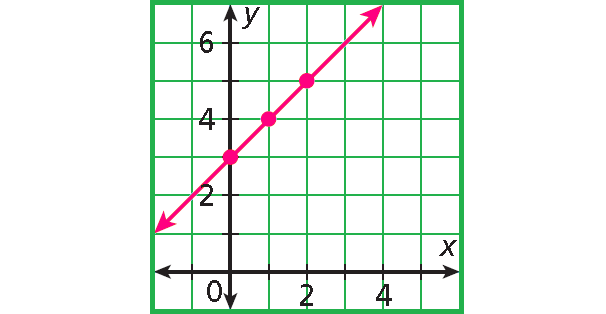
9. Answer :
y = x2
This is not linear, because x has an exponent other than 1.
10. Answer :
Choose several values of x and make a table of ordered pairs.
|
x |
f(x) = 5.50x |
|
0 1 2 3 4 5 |
f(0) = 5.50(0) = 0 f(1) = 5.50(1) = 5.50 f(2) = 5.50(2) = 11.00 f(3) = 5.50(3) = 16.50 f(4) = 5.50(4) = 22.00 f(5) = 5.50(5) = 27.50 |
Graph the ordered pairs.
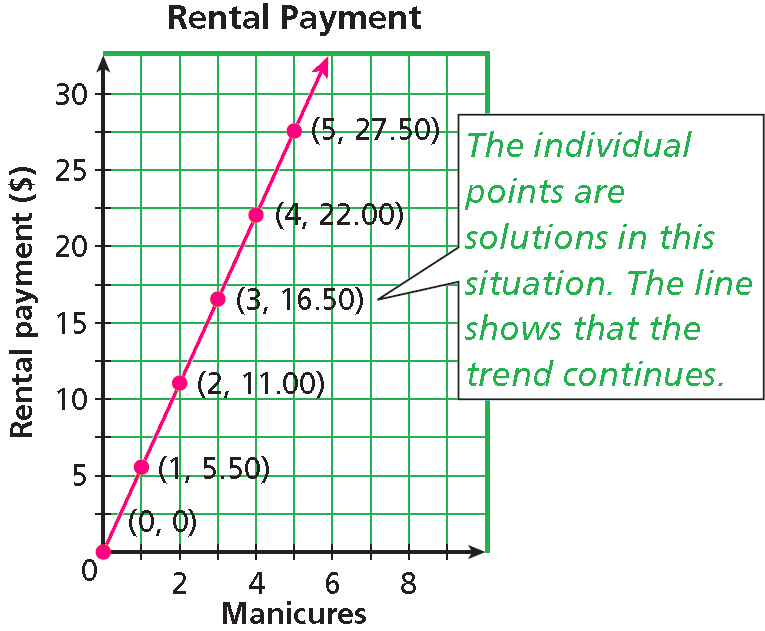
The number of manicures must be a whole number, so the domain is
{0, 1, 2, 3, .......}
The range is
{0, 5.50, 11.00, 16.50, .......}
11. Answer :
Let x be the fee per person and f be the fixed fee.
Total charge of 10 people including himself = 97.50
10x + b = 97.50 -----(1)
Total charge of 20 people including himself = 175
20x + b = 175 -------(2)
(1) - (2)
10x - 20x = 97.50 - 175
-10x = -77.5
x = 77.5/10
x = 7.75
So, fee per person is $7.75.
Applying the value of x in (10, we get
10(7.75) + b = 97.50
77.50 + b = 97.50
b = 97.50 - 77.50
b = 20
So, the fixed charge for party is $20.
a. number of persons attending is independent and total charge is dependent.
b. rate of change = 7.75
c. initial value = 20
d. the total charge for 17 people :
Total charge = 7.75 (number of persons attending) + 20
= 7.75(17) + 20
= 131.75 + 20
= 151.75
e. the number of people who could come for $500 :
500 = 7.75 (number of persons) + 20
Subtracting 20, we get
500 - 20 = 7.75(number of persons)
480 / 7.75 = number of persons
number of persons = 61.9
So, 62 people were attending the party.
Subscribe to our ▶️ YouTube channel 🔴 for the latest videos, updates, and tips.
Kindly mail your feedback to v4formath@gmail.com
We always appreciate your feedback.
About Us | Contact Us | Privacy Policy
©All rights reserved. onlinemath4all.com
Recent Articles
-
Digital SAT Math Problems and Solutions (Part - 14)
Dec 20, 25 09:54 AM
Digital SAT Math Problems and Solutions (Part - 14) -
US Common Core K-12 Curriculum Algebra Word Problems
Dec 20, 25 01:19 AM
US Common Core K-12 Curriculum Algebra Word Problems on Systems of LInear Equations -
US Common Core K-12 Curriculum Algebra Solving Systems of Equations
Dec 20, 25 01:18 AM
US Common Core K-12 Curriculum - Algebra : Solving Systems of Linear Equations
